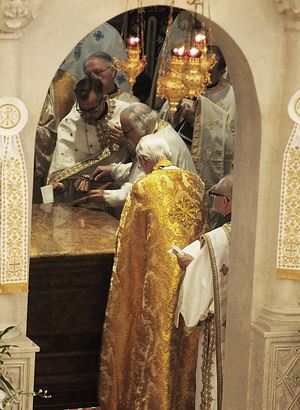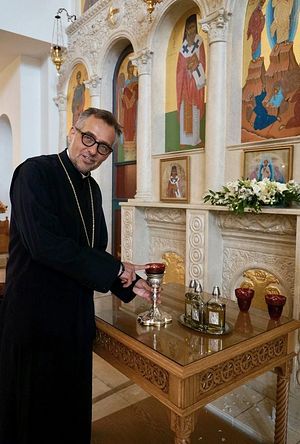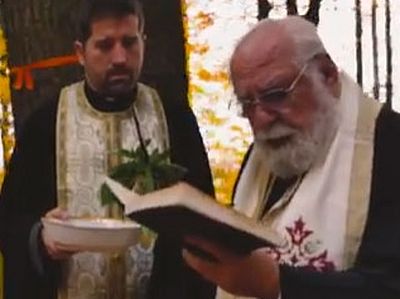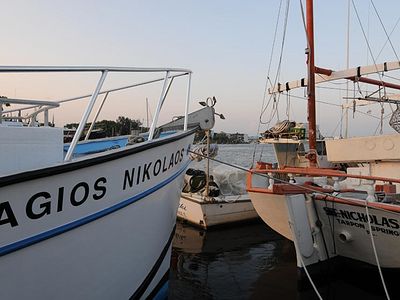Source: COX MEDIA GROUP
November 9, 2016
It was a once-in-a lifetime celebration for faithful members of the Transfiguration Greek Orthodox community on Nov. 5 as the church was finally consecrated in an old-world ceremony by their bishop, Metropolitan Isaiah of Denver, and the church’s priest, the Rev. Father Vasileios Flegas.
A crowd of more than 300 filled the beautiful rock church with the red tile roof, perched on a hill above St. Stephen’s School Road. The interior is filled with gilded iconography, white marble, brass lamps and colorful Byzantine artwork. Walking inside is cultural experience that is a step back in time.
“Everything that we do is an ancient service that holds onto traditions handed down from the apostles to the fathers without any additions or subtractions,” Flegas said.
He explained why the church’s altar faces east.
“The sun rises from the east, and we see Christ’s rising as the true light of the world,” Flegas said.
Certain conditions and milestones must be met before a church is consecrated. One necessity is a walkway that encircles the church to accommodate ceremonial processions in the Orthodox tradition. Transfiguration finished that project late in the summer, making way for the consecration and three-day celebration.
Twelve years after the church was built, dreams were realized on the foggy Saturday morning. The consecration began with the promenade of clergy, altar servers, myrrh bearers, choir and congregants walking around the cliff-hugging church three times to “baptize” it.
Flegas said many of his members are converts.
“Even though this is a Greek Orthodox Church, you don’t have to be Greek to be Orthodox, just like you don’t have to be Roman to be a Catholic,” Flegas explained. “There are many whole families who have converted because they fell in love with the traditions.”
The consecration joins the past with the present.
“In the very heart of the altar, we place relics of three martyrs with the holy Chrism (oil which is used for baptism),” Flegas said. “We also put all the names of those who are living and have ‘fallen asleep,’ so this small community of 150 plus families produced 6,600 names, (living and deceased). All those souls, we pray to be united with the martyrs in heaven.”
Then beeswax, myrrh and spices such as those used to bury Jesus are poured over the heart of the altar to preserve and seal the names and relics, and the altar is consecrated.
Flegas said the idea of having relics of martyred saints embedded in the altar goes back to when early Christians worshiped in the catacombs.
“Christians built churches on relics of martyrs because they felt these were people who were closest to God because they spilled their blood for Christ in witnessing their faith,” Flegas said. “We’ve continued the tradition ever since Christianity was legalized by Constantine the Great in the Edict of Milan.”




